Android优化(瘦身+代码+内存)
原文链接:https://yuchao.wang/article?id=37
应用瘦身
- 首先打包
xxx.apk -
Build -> Analyze APK导入xxx.apk后会发现如下图 - 然后我们会大致分析一下应用的文件大小是否正常,将未用到的大文件清理
- 点击DEX文件,还可以查看类个数和方法个数,这里如果应用达到了64k的限制,那么我们则需要将应用拆分,插件化处理。
- 点击DEX文件,我们会看到包名和类名,分析靠前的包是否需要。(有时候我们会引用到相似功能的第三方库,但是我们只用了一个,删除不必要的类库,当然也可以直接在gradle里面进行分析)
- 想知道跟老版本的区别,可以点击右上角的
Compare with - 去掉无用资源以及类库后,最后重新打包即可
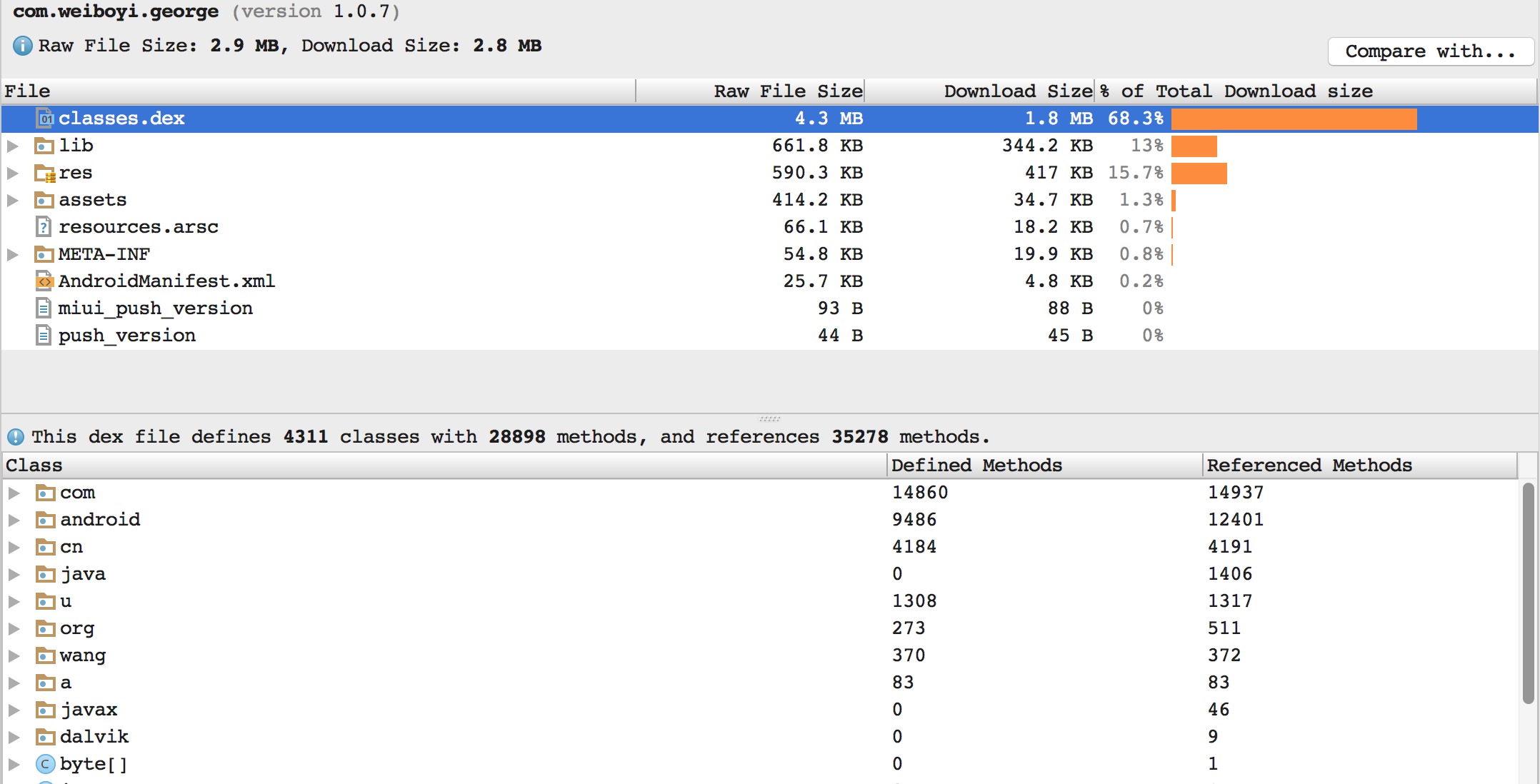 应用瘦身
应用瘦身
代码分析
-
Analyze -> Inspect Code我们会发现下图 - 不要被问题数吓到,可能有很多是类库自己的问题,我们只需要分析自己应用的问题即可。
- 大部分都是比较简单的容易处理的小问题,然后有些提示其实也没必要改动,一般就是用来优化代码执行速率以及减少内存开销的一些问题。
- 最方便的一点就是,点开每一个问题,右侧都给出了问题的定位、描述、解决办法。我们能从这些提示中学到不少关于代码优化的小技巧呢。
 代码分析
代码分析
内存优化
内存优化是Android应用优化最重要的一部分
内存分配
- 静态区:主要存放静态数据、全局 static 数据和常量。这块内存在程序编译时就已经分配好,并且在程序整个运行期间都存在。
- 栈区 :当方法被执行时,方法体内的局部变量都在栈上创建,并在方法执行结束时这些局部变量所持有的内存将会自动被释放。因为栈内存分配运算内置于处理器的指令集中,效率很高,但是分配的内存容量有限。
- 堆区 :又称动态内存分配,通常就是指在程序运行时直接 new 出来的内存。这部分内存在不使用时将会由 Java 垃圾回收器来负责回收。
内存泄露
- 直观表述:只要长的生命周期引用一个比他生命同期短的对象就可能内存泄漏
- 根本原因:内存中有些对象的引用还存在,但是却没有什么用处,GC没有办法释放,因此还占用内存。
- 表现形式:A对象引用B对象,A对象的生命周期(t1-t4)比B对象的生命周期(t2-t3)长的多。当B对象没有被应用程序使用之后,A对象仍然在引用着B对象。这样,垃圾回收器就没办法将B对象从内存中移除,从而导致内存问题。
常见情景
- 集合类:Map or List
public static void main(String[] args) {
ArrayList<Student> arrayList = new ArrayList<>();
for (int i = 0; i < 5; i++) {
Student student = new Student();
student.name = i + "";
arrayList.add(student);
if (i == 2) {
student = null;//没有释放内存,造成内存泄露
}
}
System.out.println(arrayList.toString());
arrayList.set(3, null);// 正确释放内存
System.out.println(arrayList.toString());
}
// 结果如下
[Student{name='0'}, Student{name='1'}, Student{name='2'}, Student{name='3'}, Student{name='4'}]
[Student{name='0'}, Student{name='1'}, Student{name='2'}, null, Student{name='4'}]
-
非静态内部类创建静态实例:因为非静态内部类默认会持有外部类的引用,而该非静态内部类又创建了一个静态的实例,该实例的生命周期和应用的一样长,这就导致了该静态实例一直会持有该Activity的引用,导致Activity的内存资源不能正常回收。正确做法是将
Test内部类抽取出来或者设置为静态内部类。
public class Activity {
private static Test test = null;
class Test {
}
public void onCreate() {
if (test == null) {
test = new Test();
}
}
}
-
匿名内部类:匿名内部类会持有外部类的一个引用,因此不要再将这个引用,传入异步线程。否则一定会造成内存泄露。
-
static:跟应用的生命周期是一样长。永远不要创建静态的 Context 或 View 对象,或者将二者存储于静态变量中。
-
Context:能传Context尽量不要传 Activity 。避免在 Activity 或 Fragment 之外传递 Context 对象。尽量使用 ApplicationContext 而不是Activity;
-
异步任务:Handler+Thread 或者 AsyncTask 。
- 不要在 AsyncTasks(异步任务)或后台线程中存储指向 activities 的强引用。Activity 可能会关闭,但是 AsyncTask 会继续执行,一直保存着对该 activity 的引用。
- 如果我们一定需要传入 Activity (Dialog,Progress 之类)来进更改UI,可以使用 WeakReference 持有 Activity 的引用,每次使用前注意判空即可。
- Handler 造成内存泄露很常见,推荐使用静态内部类 + WeakReference 这种方式。具体请看WeakHandler
- Handler 还可以使用 removeCallbacks 和 removeMessages 移除
- 资源未关闭:对于使用了 Receiver Stream Observer File Cursor 等资源,应该在Activity销毁时及时关闭或者注销,回收内存。
Android Monitors
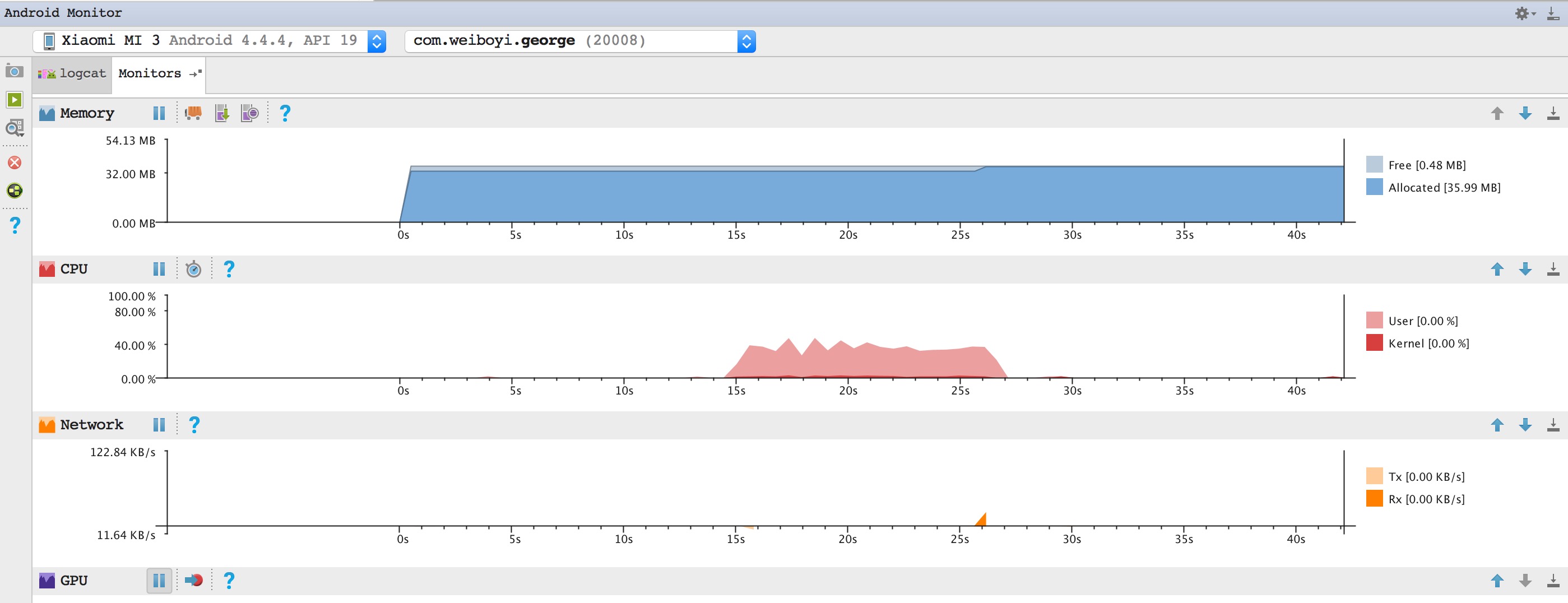 Monitors
Monitors
点击Dump Java Heap 会自动打开 .hprof文件,可以查看如下图所示
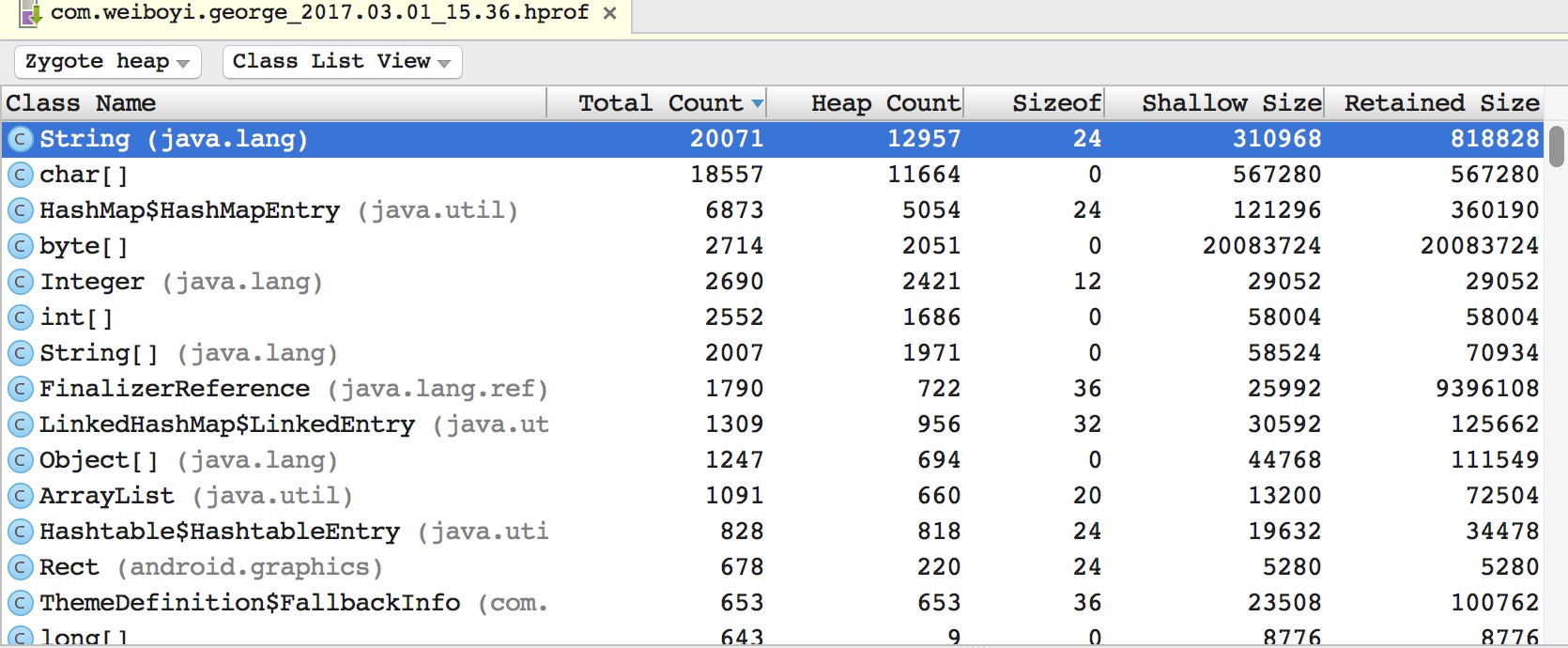 hprof文件分析
hprof文件分析
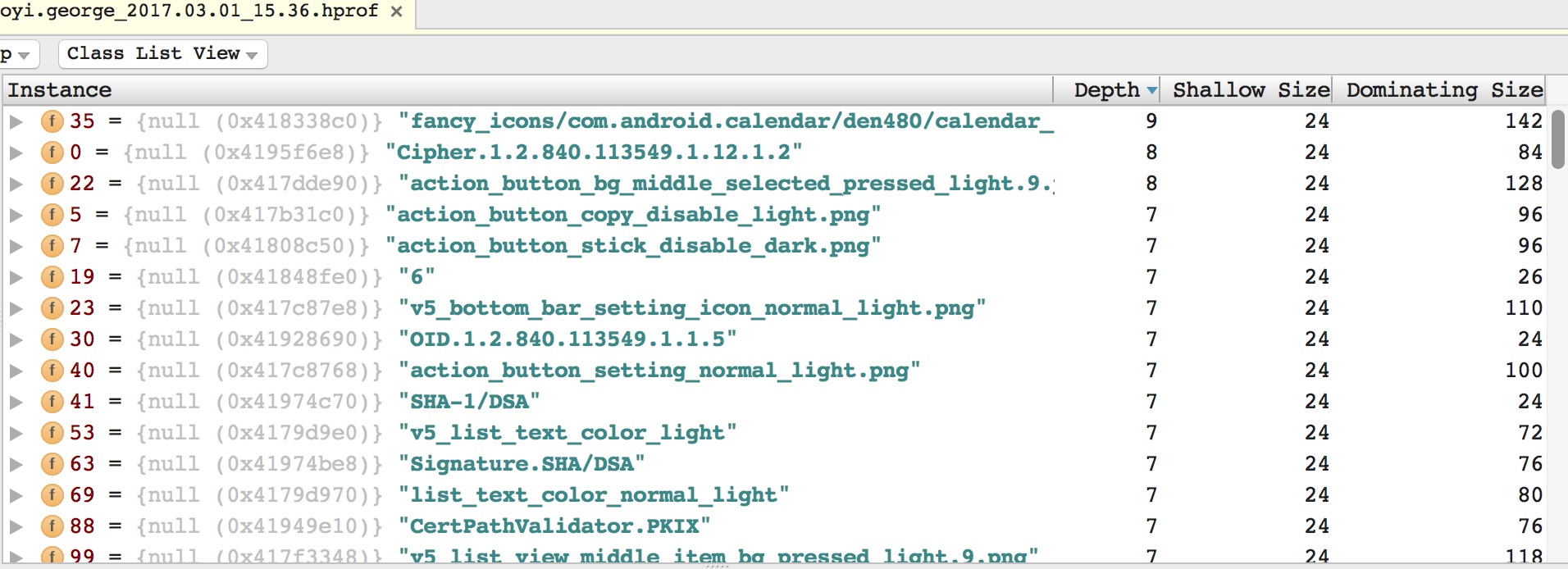 hprof文件分析
hprof文件分析
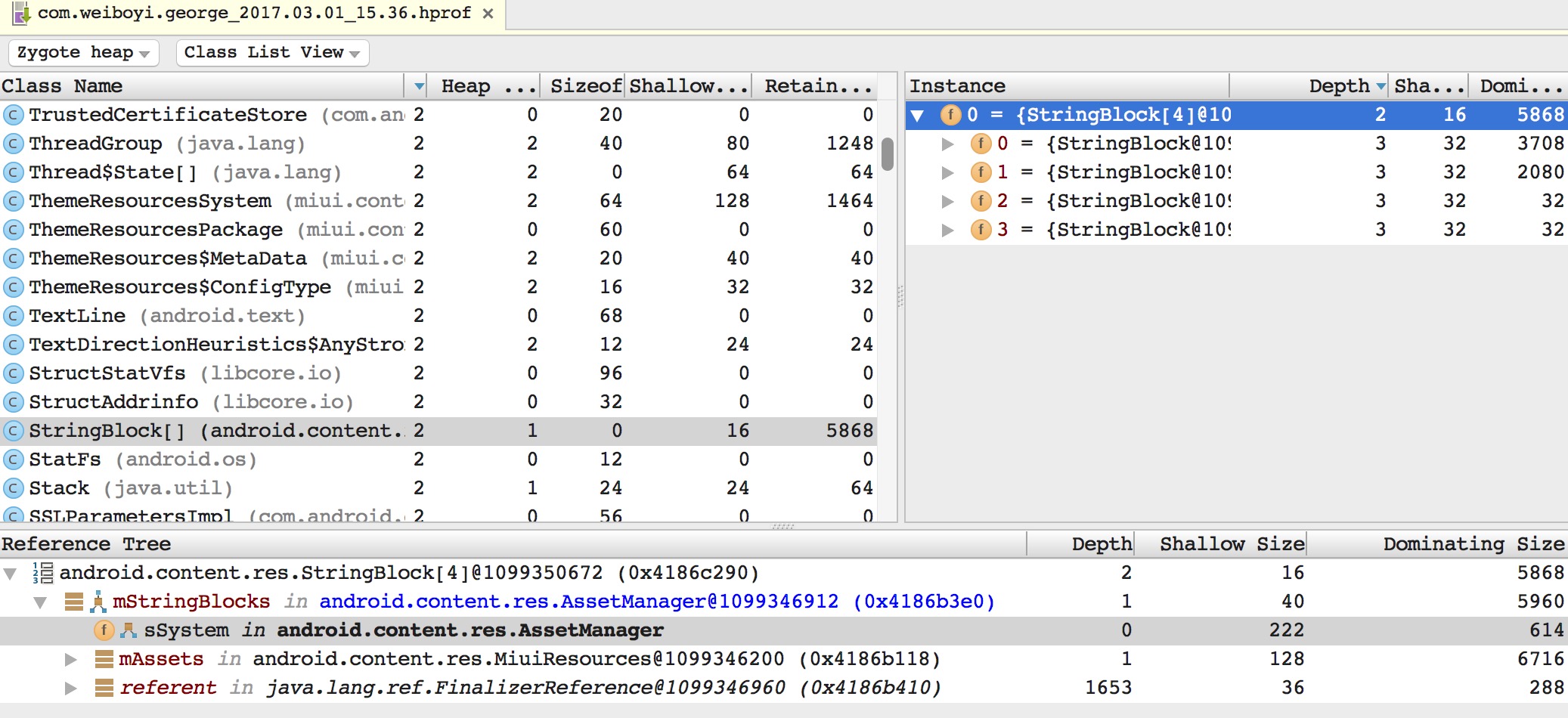 hprof文件分析
hprof文件分析
那么我们怎么才能发现内存泄露呢?这只是显示了一些基础的保留堆栈、总栈、层次、深度之类的参数,我们只能分析比较浅显容易看出来的内存泄露,比如某一个Bitmap占用了大量的内存,然后就可以 jump to source 。如果想要详细分析应用内存,这时就需要用到MAT了。
MAT 分析跟踪
- 下载地址
- 首先将 .hprof 文件导出为标准文件 ,然后使用 MAT 打开,选择
leak suspect report,
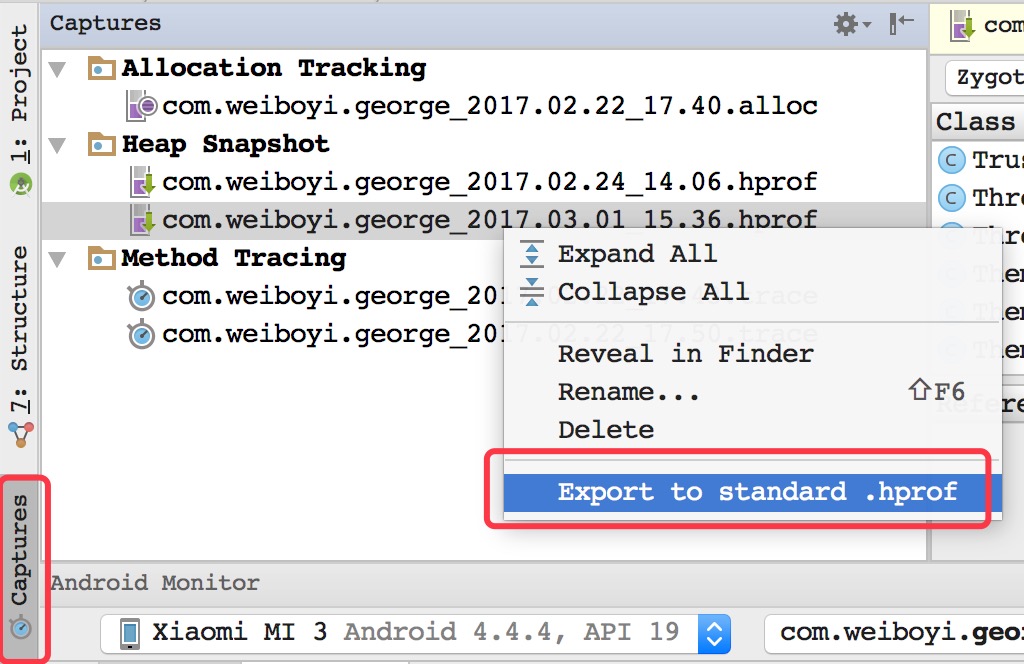 hprof文件分析
hprof文件分析
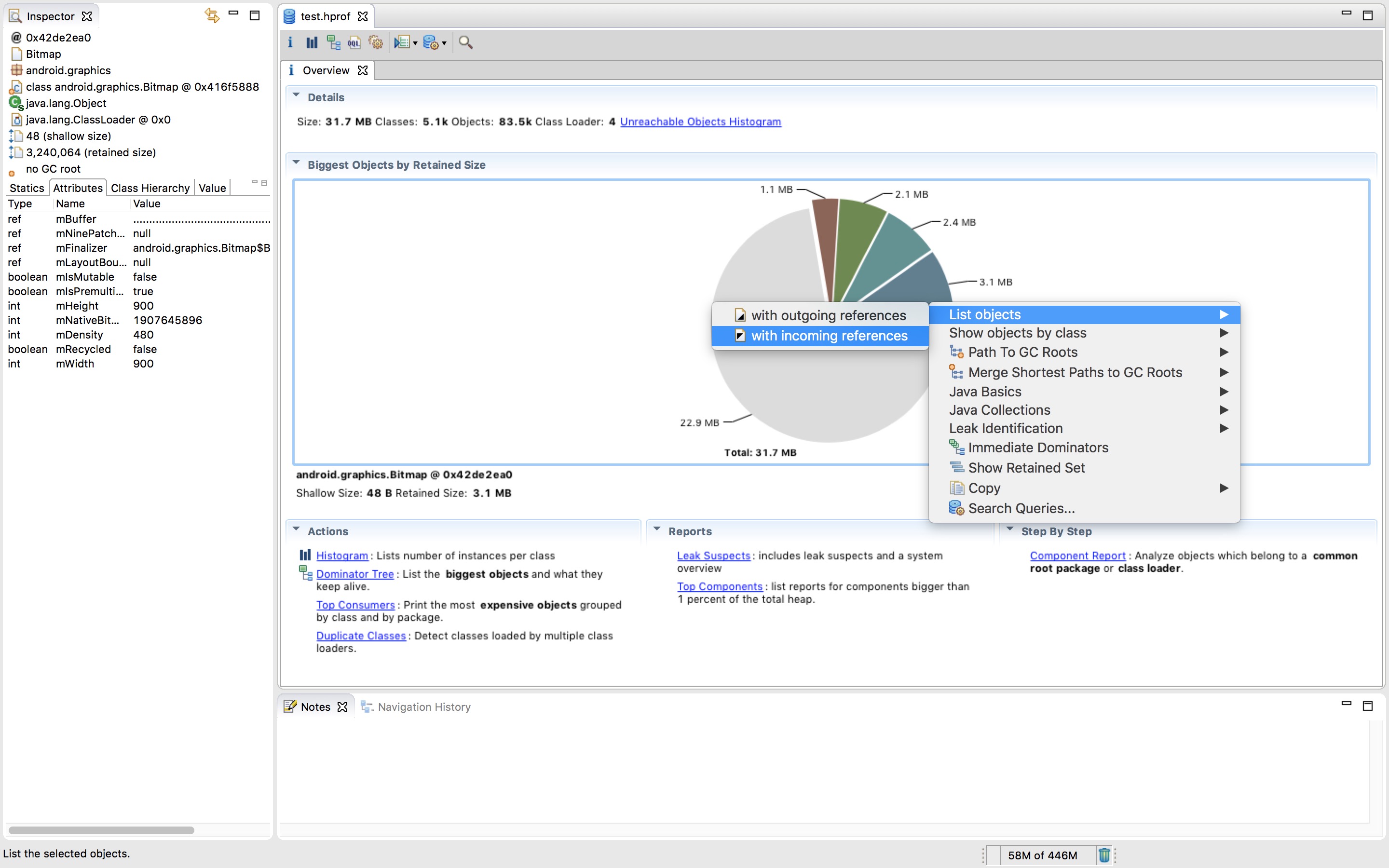 MAT
MAT
 MAT
MAT
 MAT
MAT
可以根据上图中引用个数判断是否内存泄露,如果引用个数过多,可能就会造成内存泄露。我们点击Histogram 查看一下 ArrayList
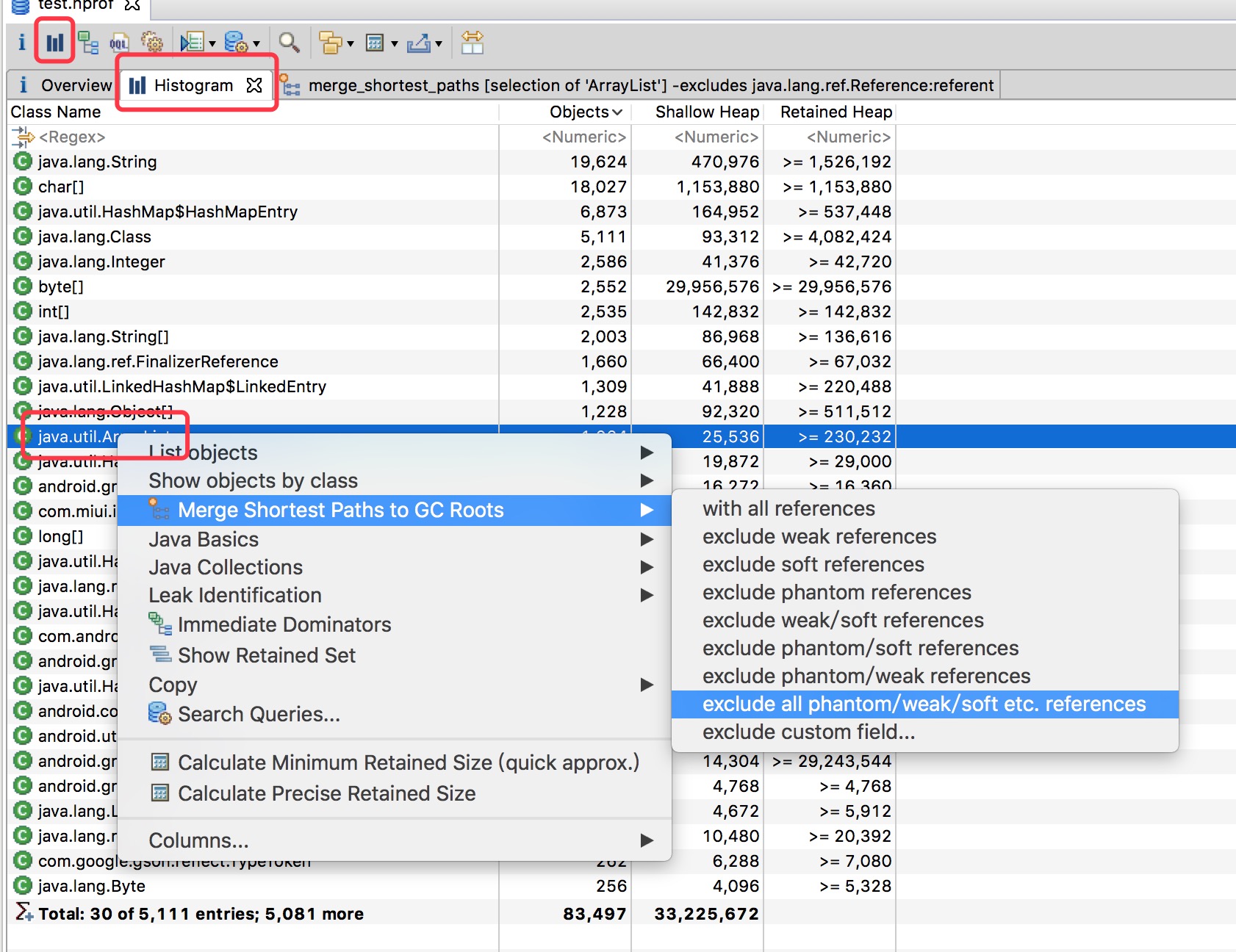 MAT
MAT
 MAT
MAT
通过对包名weiboyi的搜索发现,util 包中 GsonUtil 可能会有内存泄露,因为引用数量太多了。
下面我们再搜索一下activity,看是否存在Activity的泄露。可能我这运行次数比较少,目前还没有发现。
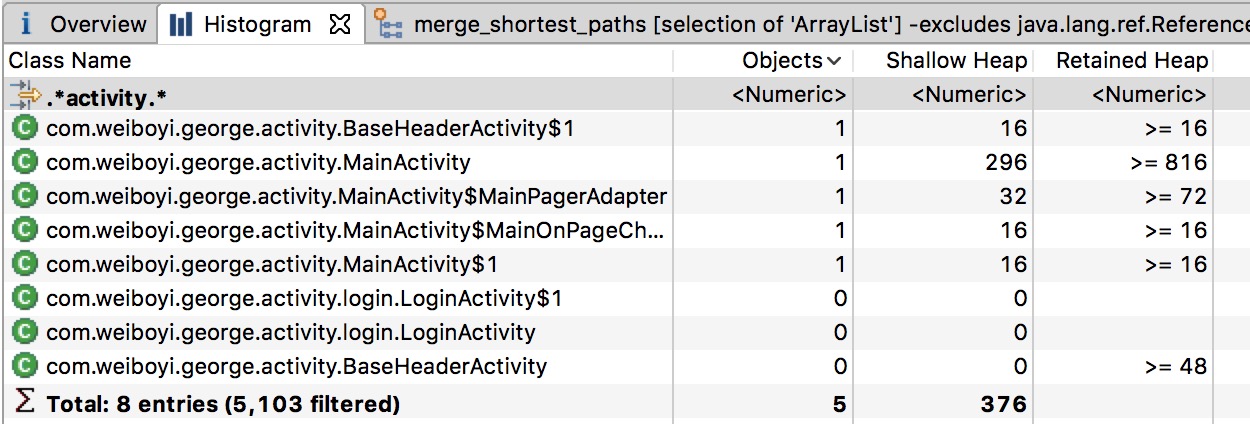 MAT
MAT
以上都仅仅是比较简单的用法,MAT的更多功能只能慢慢探索。
LeakCanary
如果你厌倦了上述的检测内存泄露的繁琐方式,那么现在有个开源类库LeakCanary,可以直接让内存泄露无所遁形。
具体的说明请看官网吧,LeakCanary中文说明在这


